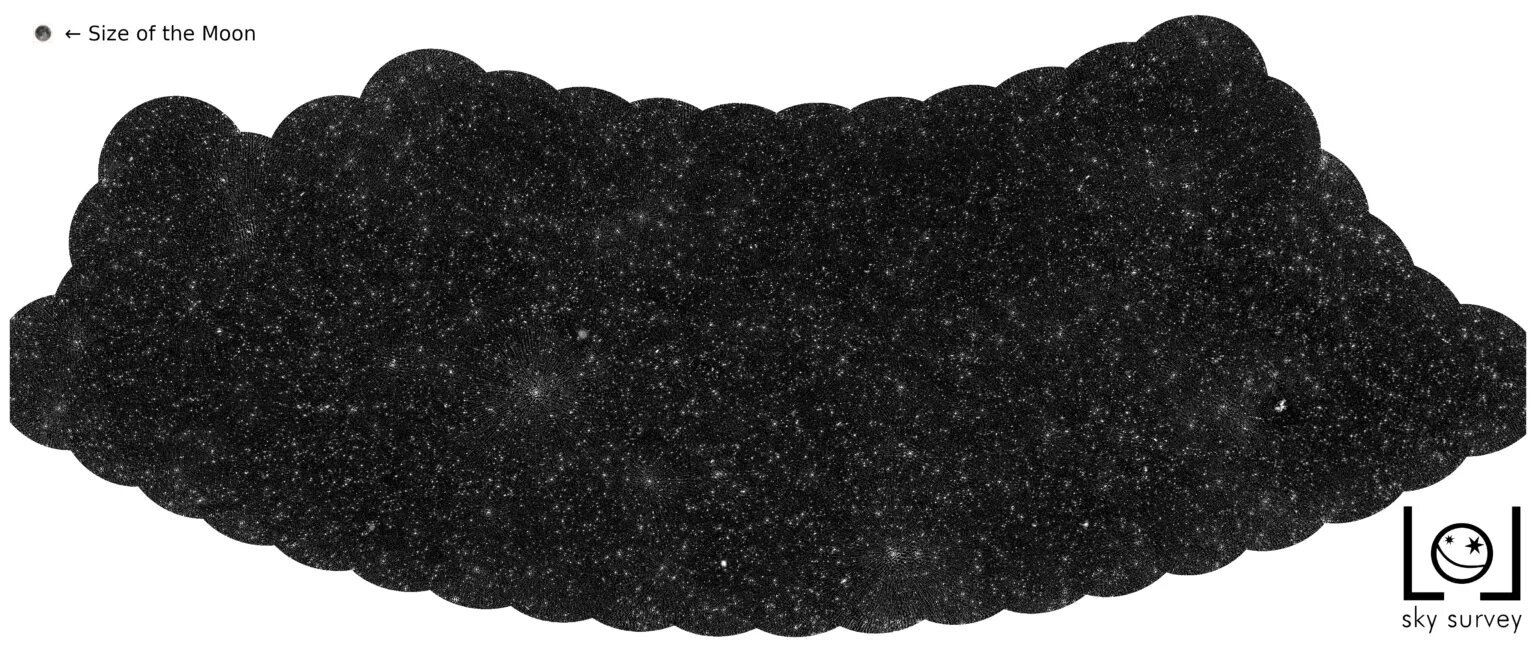Astronomers used a combination of low frequency telescopes, hypercomputers and algorithms to create a massive map of 25.000 supermassive black holes.

The map shows thousands of dots that look like stars, but are actually huge black holes, each located in a different, distant galaxy.
The researchers located the celestial objects by analyzing the emissions emitted by matter that erupted when it approached the black holes.
Each white dot on the map is an oversized black hole in its own galaxy.
These shows were detected by LOFAR (Low Frequency Array), a huge network of radio telescopes existing at 52 stations in nine European countries.
LOFAR operates at the lowest frequencies that can be observed from Earth. However, its location had a major problem for the study.
Οι παρατηρήσεις του LOFAR παραμορφώνονταν από την ιονόσφαιρα, ένα κέλυφος ελεύθερων ηλεκτρονίων που περιβάλλει τη Γη και δρούσε σαν ένας θολός φακός πάνω από το telescope.
"It's similar to trying to see while swimming in a pool," says the co-author. of studying Reinout van Weeren of the Leiden Observatory. "When you look up, the waves at water of the pool deflect light rays and distort the view.”
The researchers overcame this challenge by using supercomputers and new algorithms to correct the ionosphere effect every four seconds.
This allowed them to convert the radio signals into pictures.
The new map currently covers 4% of the northern sky, but astronomers plan to continue their work until they map the entire area.
Ultimately, they hope to uncover new insights into its structure universe.





